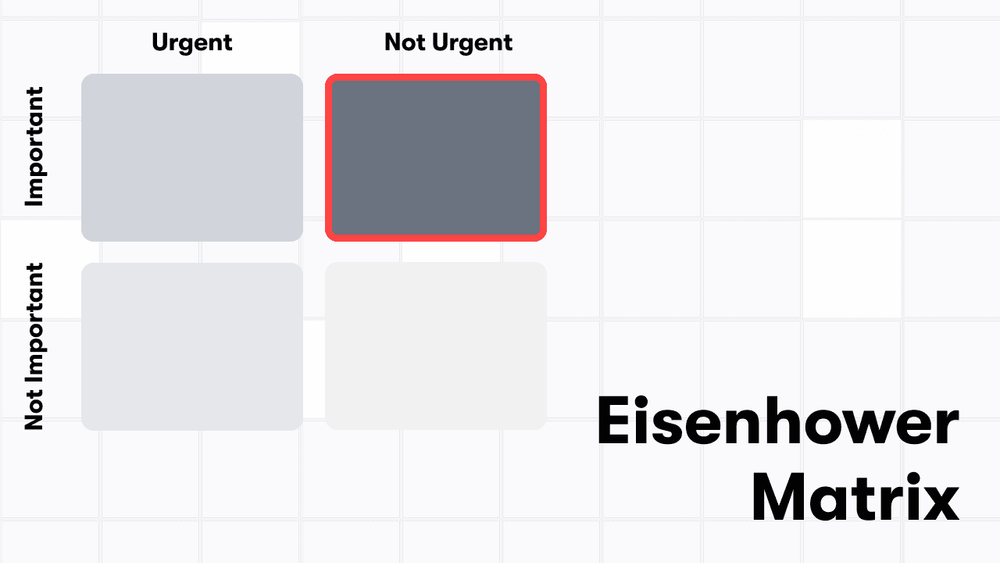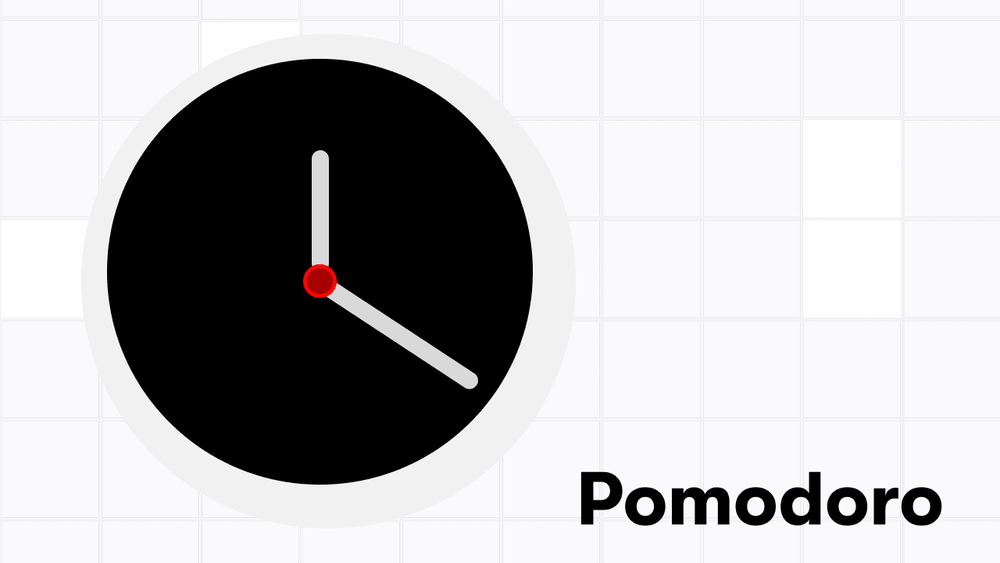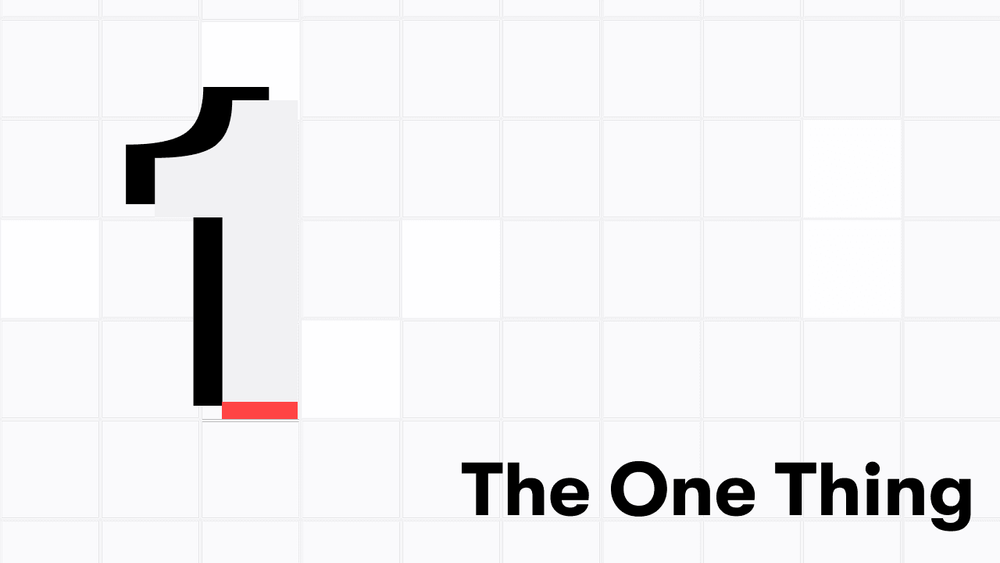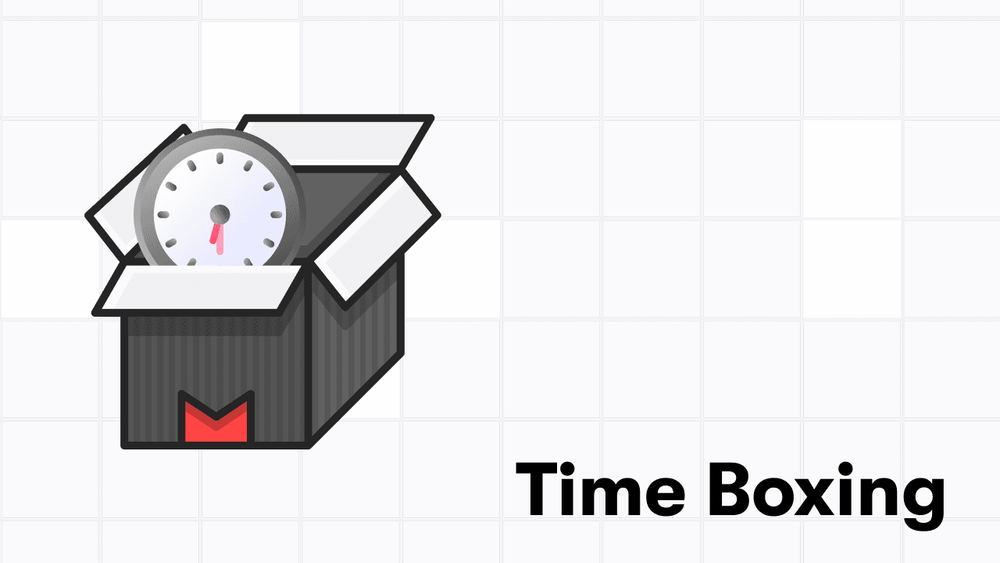In today’s fast-paced world, it’s easy to get overwhelmed by a growing list of tasks and responsibilities. Whether you’re a busy professional, a student, or managing a household, effectively prioritizing your tasks is crucial to staying productive and reducing stress. One powerful tool for achieving this is the Eisenhower Box method, a simple but effective time management technique named after Dwight D. Eisenhower, the 34th president of the United States. Eisenhower was known for his extraordinary productivity, and his approach to task management became popular with people seeking to boost their efficiency.
What is the Eisenhower Box?
The Eisenhower Box, also known as the Urgent-Important Matrix, helps you prioritize tasks based on two key dimensions: urgency and importance. By categorizing tasks into these four quadrants, you can decide how to handle them:
- Urgent and Important: Tasks that require immediate attention. These top-priority tasks must be done now or very soon to avoid negative consequences.
- Important but Not Urgent: Tasks that are crucial for long-term success but don’t need to be completed right away. These are often strategic tasks like planning, personal development, and relationship building.
- Urgent but Not Important: Tasks that need to be handled quickly but don’t necessarily contribute to your long-term goals. These can often be delegated to others.
- Not Urgent and Not Important: Tasks that are neither urgent nor important and are simply distractions. These should be eliminated or drastically reduced to free up time.
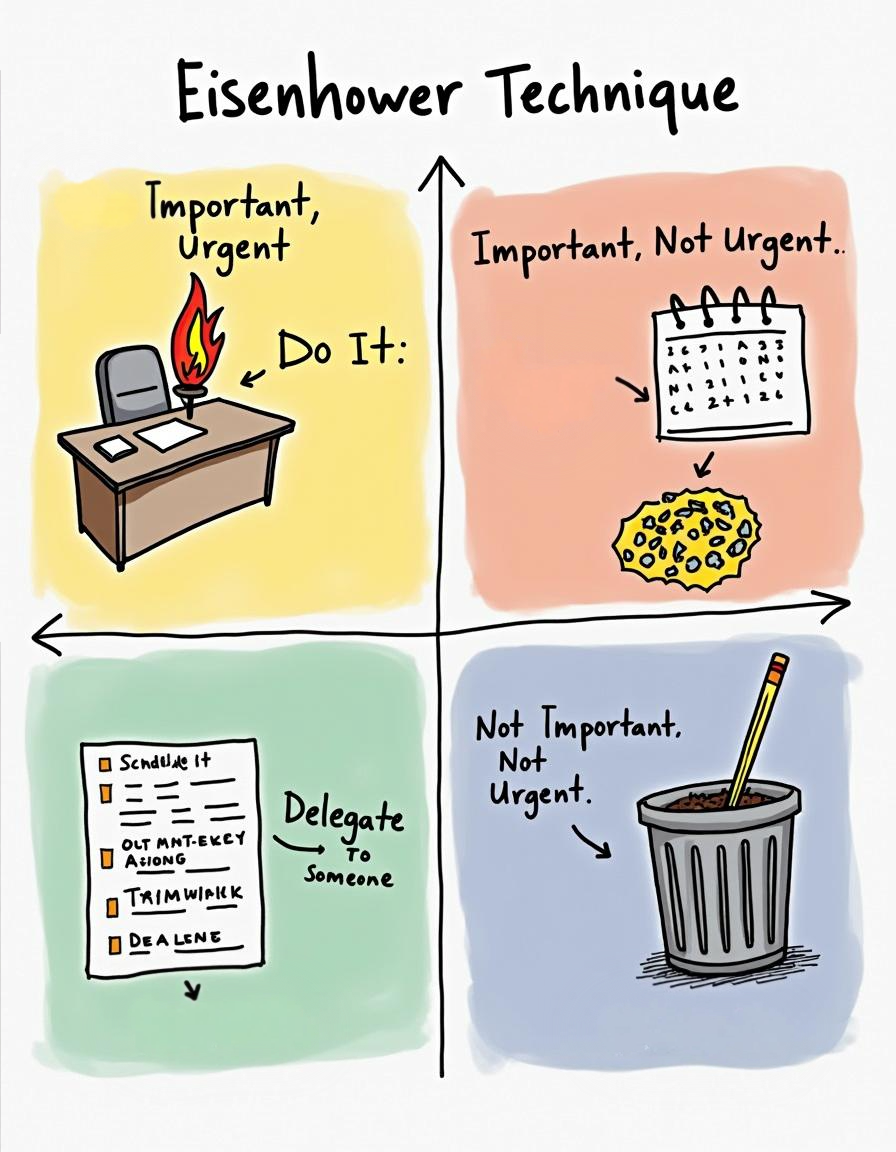
How to Use the Eisenhower Box
Here’s how you can implement the Eisenhower Box method in your daily routine:
1. List Your Tasks
Start by listing all of the tasks you need to complete. This could include both personal and professional tasks, from responding to emails to working on a major project.
2. Categorize Tasks into the Four Quadrants
Once you have your list, categorize each task into one of the four quadrants:
- Quadrant 1: Urgent and Important – tasks with tight deadlines or crises that demand immediate attention (e.g., meeting project deadlines, dealing with a work emergency).
- Quadrant 2: Important but Not Urgent – tasks with high value for long-term success but no immediate deadline (e.g., learning new skills, exercise, long-term planning).
- Quadrant 3: Urgent but Not Important – tasks that can be handled by someone else but need immediate attention (e.g., replying to certain emails, attending low-priority meetings).
- Quadrant 4: Not Urgent and Not Important – activities that waste time (e.g., mindlessly scrolling through social media, watching TV aimlessly).
3. Take Action
- Do it: Focus on completing tasks in Quadrant 1 first since they’re both urgent and important.
- Schedule it: Set aside time to work on tasks in Quadrant 2. These may not be urgent, but they are essential for long-term success.
- Delegate it: If you can, delegate tasks in Quadrant 3. They need to be done, but not necessarily by you.
- Eliminate it: Try to eliminate or reduce tasks in Quadrant 4. These activities are often distractions that don’t contribute to your goals.
The Benefits of the Eisenhower Box
The Eisenhower Box method is effective because it:
- Clarifies priorities: It helps you distinguish between tasks that demand immediate attention and those that contribute to long-term goals.
- Reduces overwhelm: By focusing only on what’s important, you can reduce the feeling of being overwhelmed by a never-ending to-do list.
- Boosts productivity: By dedicating time to important, non-urgent tasks, you can improve long-term productivity and avoid the “urgency trap.”
- Promotes delegation: This method encourages you to delegate tasks when possible, freeing up your time for more critical work.
Final Thoughts
The Eisenhower Box method is more than just a productivity tool—it’s a way to think strategically about how you spend your time. By dividing tasks based on their urgency and importance, you can focus on what truly matters, delegate what doesn’t, and eliminate distractions altogether. Whether you’re an entrepreneur, a manager, or a busy parent, this method can help you take control of your day and make better decisions about how to allocate your time.
Give the Eisenhower Box a try and see how it transforms the way you approach your daily tasks!
This draft provides a clear, structured introduction to the Eisenhower Box method, its steps, and benefits. Would you like to tweak any specific sections or add more details?
